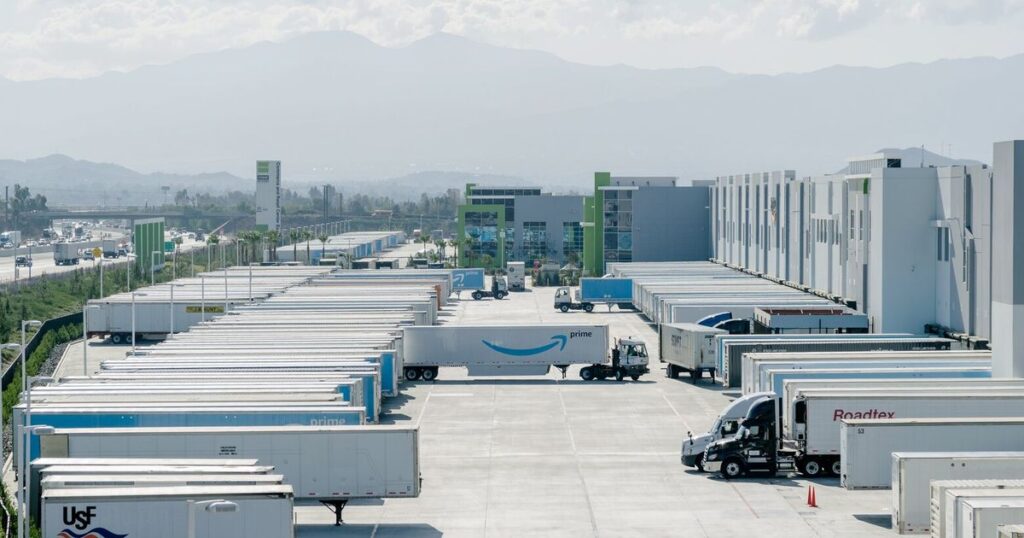These are warehouses so large they can fit football fields, and they handle many of the more than 20 billion packages Americans send and receive each year.
But a new NASA-funded study tracking pollutants from space says that the around-the-clock traffic of big trucks at these mega-hubs is making air quality significantly worse for people living in the surrounding areas.
The study, led by scientists at George Washington University, is the first of its kind. It focused on about 150,000 large warehouses across the US, using satellite technology to measure nitrogen dioxide, a harmful traffic-related pollutant. They found that nitrogen dioxide, which can cause asthma and other health problems, was elevated by an average of 20% near the warehouses. In the busiest facilities, the increase was even higher.
“The average warehouse built after 2010 looks very different from those built before that, with significantly more loading docks and parking space,” said Gage Carr, lead author of the study and an assistant professor of environmental and occupational health research at the George Washington University Milken Institute School of Public Health.
“They are also increasingly being built close together next to other warehouses, which increases traffic, especially large vehicles, which is very bad in terms of pollution.”
The study highlights that as traditional polluters — America's heavy industry — have declined over the past few decades and the power sector has stepped up cleaning up of its power plants, logistics hubs are quickly becoming major sources of pollution.
Such facilities are increasingly attracting the attention of regulators and law enforcement.
In an earlier lawsuit in 2011, then-California Attorney General Kamala Harris challenged a 1 million-square-foot warehouse complex planned in Southern California, arguing that the surrounding community was disproportionately affected by diesel exhaust fumes.
The lawsuit resulted in a settlement in which the warehouse's developer agreed to reroute traffic, conduct air quality monitoring, plant trees and bushes to mitigate air pollution, and install air purifiers in nearby homes.
E-commerce has continued to grow since the California lawsuit, and that growth has accelerated especially during the COVID-19 pandemic, spurring new warehouse construction.
The researchers, who looked at traffic information from the Federal Highway Administration and demographic data from the Census Bureau, also found that communities with higher racial and ethnic minority populations were more likely to be located near warehouses, which meant they inhaled more nitrogen dioxide and other pollutants.
For example, the proportion of Hispanic and Asian people living near the largest warehouse clusters studied was found to be about 2.5 times the national average.
The study also found that one-fifth of all warehouses are concentrated in just 10 counties, including Los Angeles County in California, Harris County in Texas, and Miami-Dade County in Florida.
The researchers said nitrogen dioxide is just one of many pollutants that people living near e-commerce hubs are exposed to. Nitrogen dioxide is relatively easier to study from space than other pollutants, Carr said. “But in the future, it would be great to understand other pollutants, such as particulate matter and black carbon, that are related to health.”
California has moved to regulate pollution from warehouse locations, adopting rules requiring the facilities to clean up emissions in 2021. The rule, which affects about 3,000 of the state's largest warehouses, requires operators to significantly reduce emissions of nitrogen oxides and other harmful pollutants from trucks that service the warehouses or take other measures to improve air quality.


